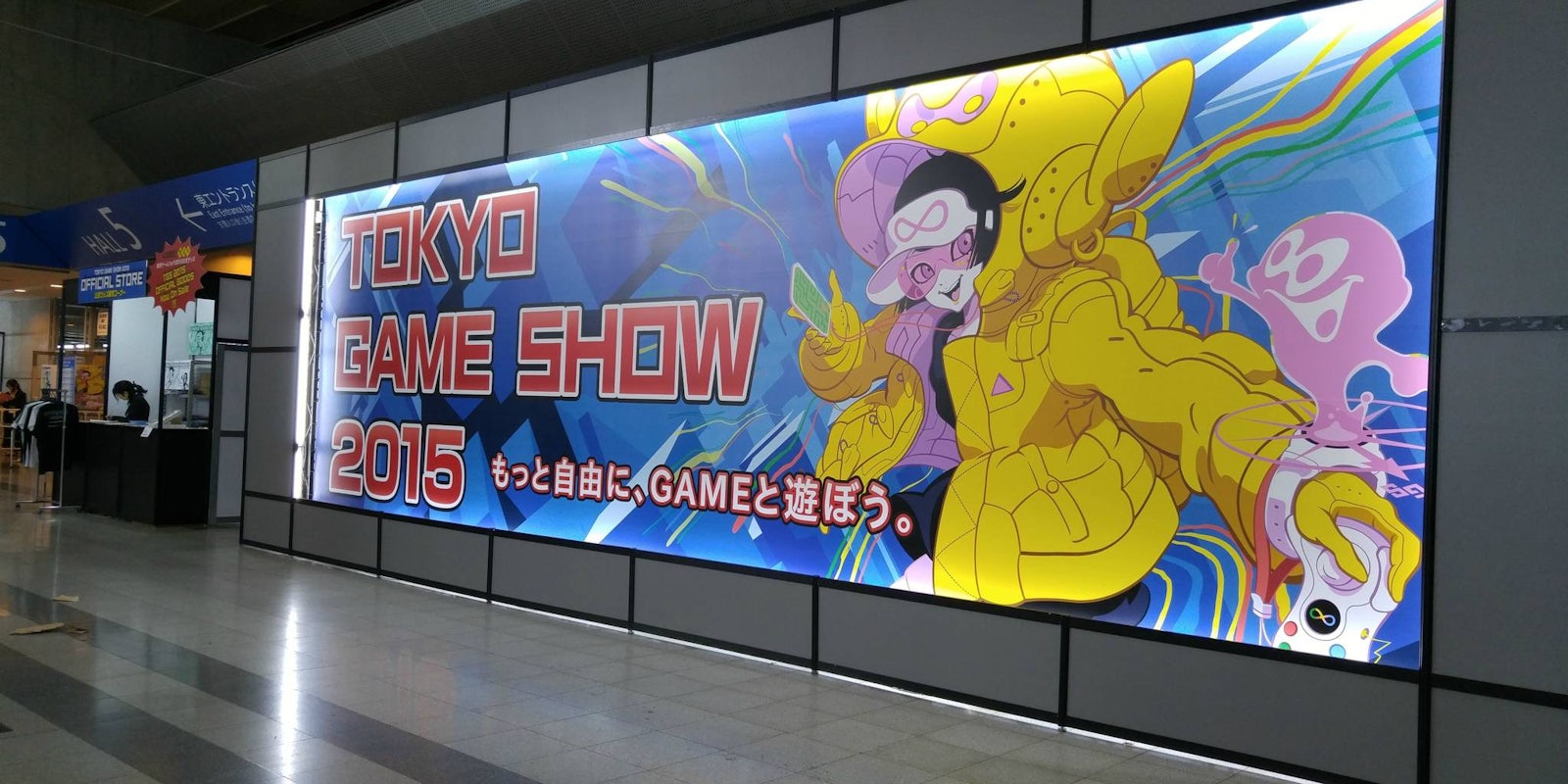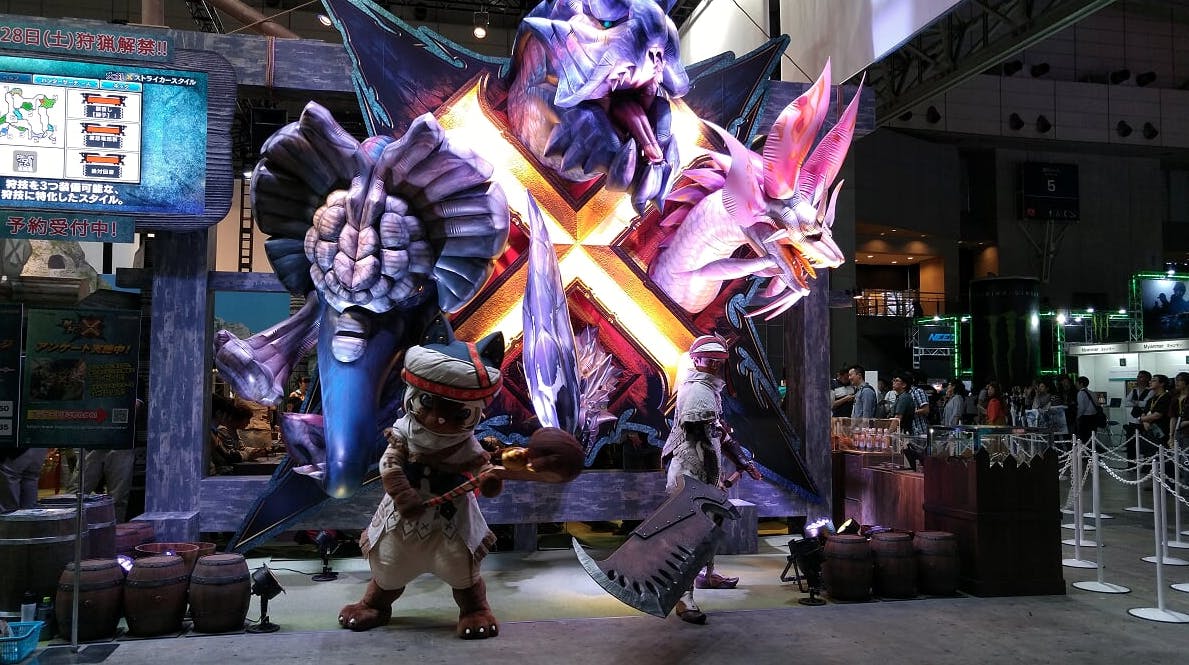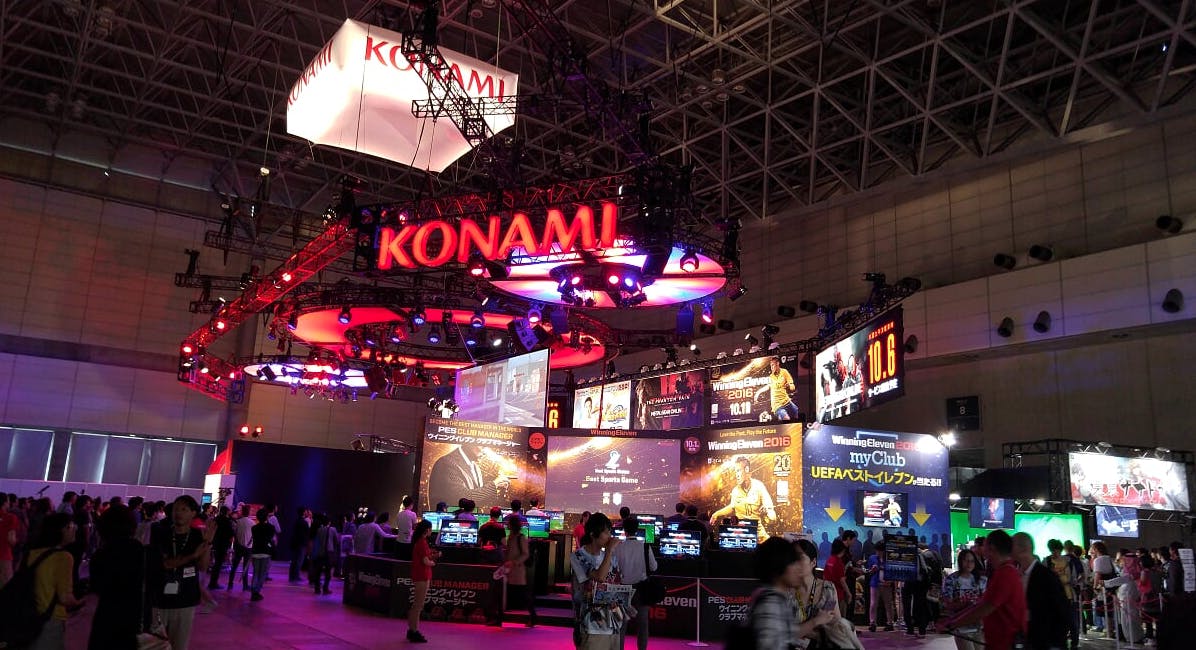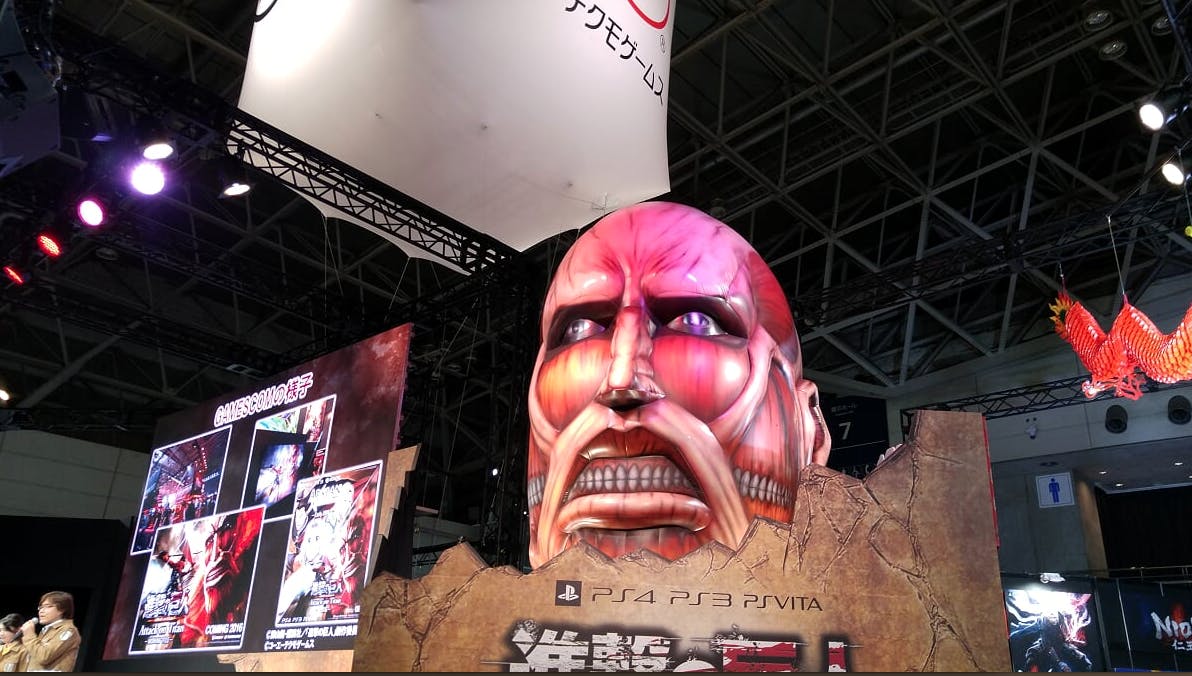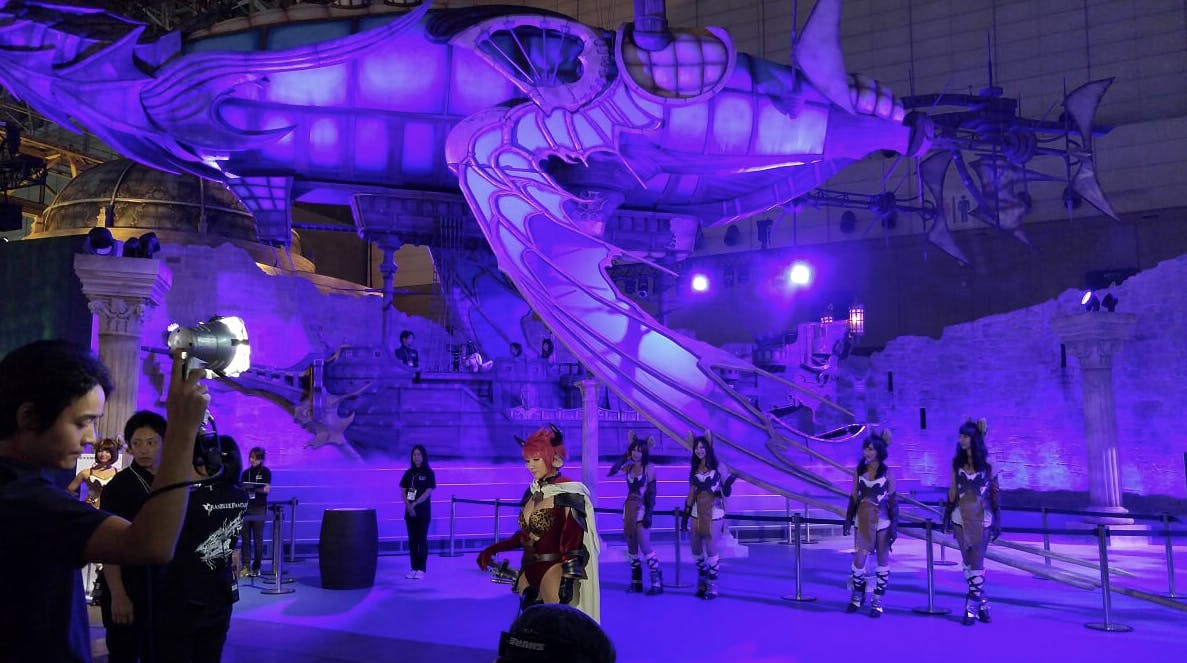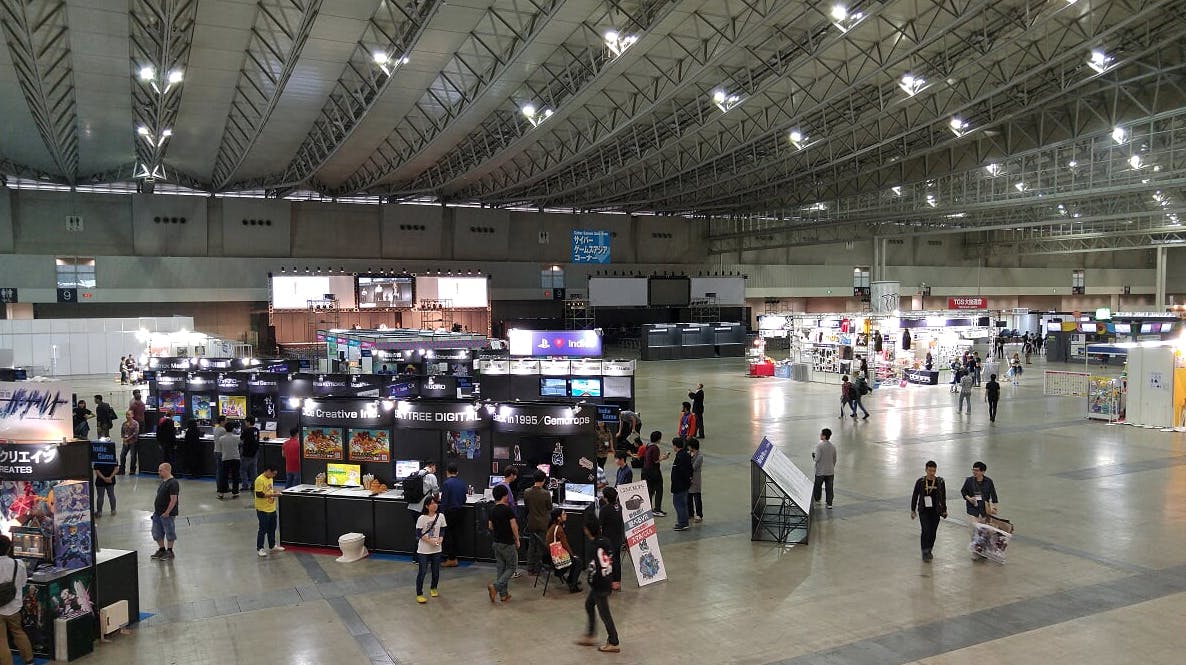Japan has brought us some of the highest-caliber gaming experiences ever created. It’s the birthplace of Mario, Mega Man, and Metal Gear Solid. So as I roamed the convention center floor at the Tokyo Game Show for the first time this year, I was surprised and a little disappointed.
I expected to visit the epicenter of core gaming, but what I found was a mix of safe, old-hat franchises from big names like Konami, Capcom, and Bandai/Namco, a nascent indie scene, and a lot of mobile games.
It reflects a few factors, but the main one would have to be changing Japanese gaming habits. While gamers in the west groaned of sequelitis, independent game developers have stepped up to bring new and unique experiences—ones that bigger development companies have embraced. Just look at the warm reception indie games and creators got at the U.S. gaming industry event E3 in June. This same level of grassroots innovation hasn’t happened in Japan, at least not yet. It all hints at an industry slowly moving further away from traditional gaming experiences toward safer bets with mobile.
To really understand how far removed the Japanese have become from traditional gaming experience, all you need to do is look at the numbers. Console sales in Japan have been on a steady decline since the 1990’s. According to VGChartz, the original PlayStation sold 19 million units, the PlayStation 2 outsold it at 23 million units, but then there was a significant dropoff with the PlayStation 3 at 10 million units. The current generation PS4 is at 1.6 million units sold. It may look like, given that PS4 has been out less than two years, that it is performing well in Japan. But really, it only just outpaced the Sega Dreamcast. Sony anticipated as much, and that’s probably why the PS4 was released in Japan in February of 2014, a few months after its release in the United States and Europe.
While console gaming thrived in the west in the late 1990s and 2000s, Japanese gamers gravitated toward handhelds. The original Game Boy in Japan sold a whopping 32 million units, the Game Boy Advance dropped off at 16 million units, the DS jumped back up at 33 million units. The 3DS is selling strong at 19 million units. Given how long the 3DS has been out, it doesn’t look like it will outsell its predecessor. The major market disrupter between the DS, out from 2004 to 2011, and the 3DS, on the market from 2011 to the present, is the introduction of mobile phone gaming.
Given the changes in Japanese gaming habits, it made sense why publishers were played it safe at TGS. Capcom had dedicated a large portion of its booth to Street Fighter V and Monster Hunter X (Japan only). Both are great games, but it shows that Capcom really isn’t investing in anything new at the moment. Square Enix dedicated a massive portion of its booth to Final Fantasy XIV and Bandai/Namco was showing off its new Naruto and Gundam games. Sega had a nice booth, with a large chunk dedicated to Phantasy Star Online 2. Sony’s booth failed to impress, showing off two remakes and only one indie game, The Tomorrow Children. Koei/Tecmo had massive installations for Attack on Titan and The Legend of Arslan, while Konami was tucked into the absolute corner of the show, highlighting Metal Gear Online. EA had a presence as well, and dedicated its booth to Star Wars: Battlefront.
By far the craziest booth at the show was dedicated to mobile turn-based RPG Granblue Fantasy. The frenzy of booth babes and the giant ship suspended overhead seemed to be overkill, but on the way back from my first day at TGS I got a look at how big the game is. I saw multiple people whipping out their cell phones to play Granblue Fantasy on the commute back to Tokyo. Actually, my entire two week stay in Japan, I only twice saw 3DS’s being played on trains.
This is in stark contrast to E3, PAX, GDC, or any other major gaming convention in the west. Booths in western shows have a broad mix of games and platforms, giving AAA and independent works plenty of floorspace.
And it’s not to say that Japanese gamers dislike new games or don’t care for indies. It’s just that when publishers see a market that doesn’t have an audience as large as in the west, it simply comes down to the numbers.
While walking the show floor, I made a point to play any game that had a controller. That wasn’t too challenging, considering a large majority of games were on touchscreen devices. Even Sony Xperia had a massive presence, including a troupe of scantily clad booth babes. Booth babes have gone out of vogue in the U.S. with the gaming community’s push for improved inclusivity, but they were still noticeably present (and noticeably popular) at TGS. During the first two days, which gives access only to press and those with industry connections, people were lining up to take photos.
But going back to the games, I was left feeling disappointed. Many of the games felt very similar. That is to say many felt like Monster Hunter. I played multiple action RPG’s that had you select a mission, run and swing a sword at a monster, run back and collect a reward. Nothing stood out as cool or unique. Talking to other journalists in the press lounge, not one could point to a game that was a must-play for the show.
As I was exploring the halls of TGS, something became notably apparent: Where were all the indies? It wasn’t until the second day, after I had asked somebody at the information counter, that I learned the indies were in a separate hall. I took the bridge to other part of the Makuhari Messe convention center to find a barren hall with a few rows of indie games. It was just such a stark contrast from the rest of the show. I went down the escalator making it a mission to play as many Japanese indie games as possible.
In the west, Gamasutra notes that an indie game can’t be just good, it has to be excellent. The competition and the fight for attention in the indie space has become so large that the only games people consider worth playing are the absolute cream of the crop.
Going through the rows of indies, surprisingly few were actually from Japan. Many came from China, Singapore, and Australia. I knew that this couldn’t be it. The Japanese indie scene had to be bigger, right? That’s when I met up with Matt Papa from Inti Creates, a Japanese indie studio made up of former developers from major Japanese studios. Inti Creates just released Azure Striker Gunvolt and is hard at work on Keiji Inafune’s Mighty No. 9 and Koji Igarashi’s Bloodstained: Ritual of the Night. Papa told me that the Japanese indie scene is still small compared to the west, and developers are waiting for more Japanese success stories before diving in. The good news is that it’s starting to grow. There are more indie-focused events and game jams happening in Japan. In some ways, TGS may not be the best show to present indie games. There are now other events like Bitsummit and Tokyo Indie Fest where developers show off their projects.
Japan, as advanced as it is, can sometimes feel like it’s stuck in the past. Cash is still used as the main way to pay for goods. That makes it tough for indie developers who often rely on online gaming platforms that require credit cards. And while PC gaming has seen a huge resurgence in the west, it’s still very small in Japan. Many gamers in Japan think primarily of consoles and smartphones for gaming. But many indie studios rely on PC as their primary sales platform.
All of these factors aren’t lost on Japanese fans of traditional gaming. Talking with some core gamers in Japan, they find it upsetting that console gaming is dwindling while mobile gaming is thriving. It’s very doubtful that core gaming will die in Japan, however. If Japanese publishers like Nintendo and Sony plan to release a game overseas, it will still hit store shelves in Japan, even if it sells fewer copies. This could also be a question of tradition and keeping up appearances. It’s probably the same reason why the Xbox One still has a presence in Japan even though console sales have been dismally low at only 55,000 sold.
Times are changing for gaming in Japan. Eurogamer corroborated two reports that suggest that Konami will exit AAA video game development, bar Pro Evolution Soccer. And TGS felt like a real-life representation of that report. It’s obvious where the market is shifting in Japan, and it would be foolish for companies not to follow suit. Even Nintendo, as slow to change as it can be, can’t ignore the power of mobile. It recently announced that Pokémon would be coming to mobile in the form of an augmented reality game called Pokémon Go. And while conditions don’t look too promising for name-brand studios, this could be just tight right moment for a new crop of smaller developers to break out with something new and exciting. If AAA publishers see returns on new indie endeavors, it could be enough inspire a new era of Japanese game development.
Photos by Imad Khan
